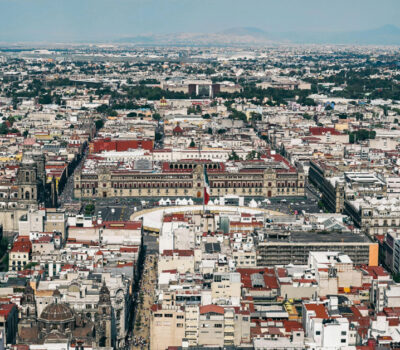The annual Monarch butterfly migration is one of nature’s great spectacles and a top attraction for visitors to Mexico’s central highlands. Each year, as many as 60 million to one billion Monarch butterflies make journey from eastern Canada to the forests of western central Mexico, a journey that spans more than 2,500 miles. The Monarch butterflies spend their winter hibernation clustered in small areas of the Reserva de la Biosfera Mariposa Monarca (Monarch Butterfly Biosphere Reserve), a national protected area and nature preserve that covers more than 200-square-miles.
The Monarch butterflies arrive in Mexico each year in late-October and make their winter homes in the tops of the trees high in the mountains of the reserve. Their arrival coincides with Dia de los Muertos (Day of the Dead); one of Mexico’s most important holidays. During the annual Day of the Dead holiday, deceased relatives are believed to return home where they’re honored with feasts, celebrations and elaborate ofrendas (offerings). According to local legend, the Monarch butterflies arriving in Mexico at this time of the year are believed to be the souls of the deceased returning to earth.
Once within the confines of the reserve, the Monarch butterflies will spend the next five months clustering together and covering the tree trunks and branches in a blanket of orange and black. Each of the individual clusters is made up of thousands of Monarch butterflies and resembles a large swollen beehive. In many instances, the weight of the butterfly clusters is enough to cause tree branches to bend or snap. The habit of clustering together makes it possible for the Monarch butterflies to conserve heat and survive the cool nighttime temperatures common to this high-altitude region.
The Monarch butterflies reproduce during the months of February and March, just before they begin their return migration to the north. During this time of year, nights in the western central highlands of Mexico are still chilly, but the warmth of the daytime sun prompts the clusters to break apart and the butterflies to begin their mating rituals. The butterflies are most active during the mating season and it’s one of the best times of the year to visit the Monarch Butterfly Biosphere Reserve.
Mexico’s Monarch Butterfly Biosphere Reserve is sectioned off into separate areas, several of which are open to the public from November through March. The most common access points for visitors to the reserve include the butterfly sanctuaries at El Rosario, Sierra Chincua, Cerro Pellon and Piedra Herrada; and all four areas of the reserve offer visitors a similar viewing experience.
El Rosario is the largest, best known and most visited area of the reserve and receives thousands of visitors on an average day. The Monarch butterfly observation point at El Rosario is situated at an elevation of 10,000 feet above sea level and reached via a steep climb up the hillside. At El Rosario, the butterflies make their home in the branches of more than 1,500 evergreen and oak trees that tower an impressive 100 feet above the forest floor. Visitors to El Rosario often base themselves in the nearby towns of Angangueo and Ocampo in the state of Michoacan.
Sierra Chincua is another of the most heavily visited areas of the reserve, though it receives fewer visitors than El Rosario and offers the least strenuous hike of any of the sanctuaries. Sierra Chincua is located just a few miles northeast of the town of Angangueo.
Visitors to the reserves who are unable to manage the challenging hike up the hillside can hire the services of an additional guide with a horse to ride up to the observation points and back. There’s not much to see along the trails, and it’s only when you near the hilltop observation point that the butterflies begin to appear fluttering around overhead and clustered on trees and branches. Every so often a strong gust of wind blows through the tree tops causing the butterflies to simultaneously burst into flight. When the butterflies take flight it sounds like light rain falling in the forest.a
You may also want to visit the small mining town of Angangueo, located near the butterfly sanctuaries at El Rosario and Sierra Chincua. Each year in February, the town hosts its annual Festival de la Mariposa Monarca (Monarch Butterfly Festival). The festival is held each year to raise awareness of the butterfly habitat and encourage nearby rural communities to aid in the protection and preservation of the reserve, as well as to promote culture and arts throughout the highland region.
For now, these magnificent creatures continue to make their annual southern migration to the forests of western central Mexico. One can only hope that the annual Monarch butterfly migration will continue and that visitors will be traveling to Mexico to witness it for many years to come.
The annual Monarch butterfly migration is one of nature’s great spectacles and a top attraction for visitors to Mexico’s central highlands. Each year . . .











